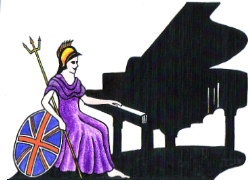Learn to Play the Piano Make Music
Piano Teacher Lessons tuition in Lea, Preston PR2 by Dan Yates Music Tuition

UK Piano Page


Experienced local Musician from Preston charging affordable rates for those interested in learning a new instrument. My service's teach a full range of instruments including piano, keyboard, classical & electric guitar. I believe in helping my students reach the best of their potential, and achieve this by using a tailored learning plan for each student; whether you want to learn to grade standard or just learn how to play your favourite tunes, I can help you achieve your goals.
Disclosure and Barring Service: yes
Qualification: Grade 8 ABRSM, Grade 6 Trinity, Grade 5 Music Theory
Disclosure and Barring Service: yes
Qualification: Grade 8 ABRSM, Grade 6 Trinity, Grade 5 Music Theory
Hampstead, London
England
Experienced piano teacher and accompanist
Great Harwood, Lancashire
England
I teach piano & violin from my own home in Great
Music Festival for performers and guests Our 10th
18-06-2022 12:30PM
The Morecambe Bay Piano Group was set up to extend
11-12-2021 01:00PM
The Morecambe Bay Piano Group was set up to extend
08-01-2022 01:00PM
The Morecambe Bay Piano Group was set up to extend
12-02-2022 01:00PM